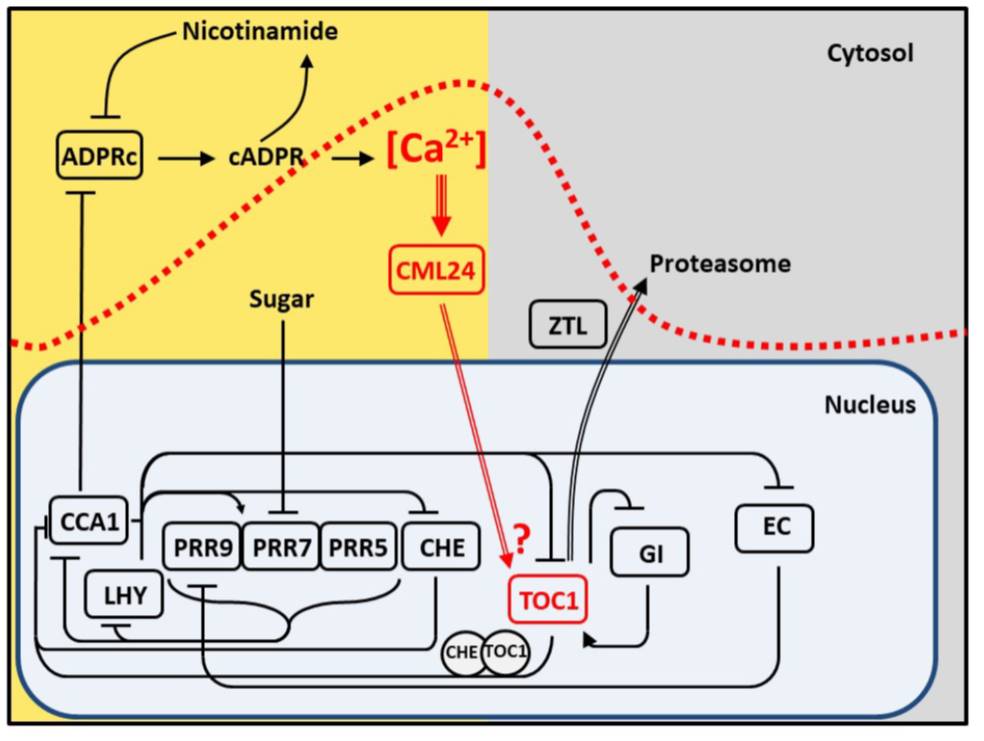
Circadian oscillations of cytosolic free calcium regulate the Arabidopsis circadian clock (Nature Plants)
Plant Science Research WeeklyThe circadian rhythm confers competitive advantages by coordinating the physiology and behavior of biological systems. The internal clock in eukaryote organisms comprises feedback loops, and in Arabidopsis most of them involve negative transcriptional regulation events as well as post-transciptional,…
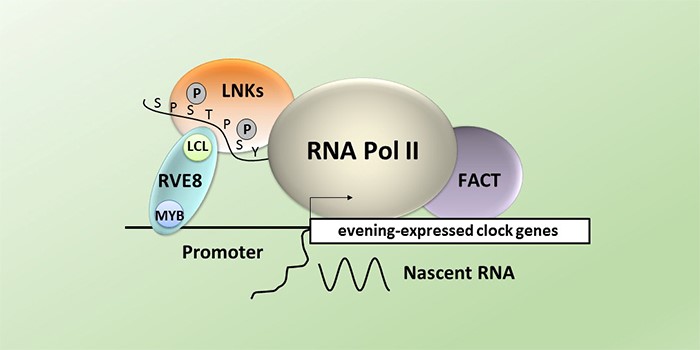
How Plants Generate Circadian Rhythms in Transcription
Research, The Plant Cell, The Plant Cell: In a NutshellMa et al. investigate a protein complex that controls steady-state mRNA circadian oscillations https://doi.org/10.1105/tpc.18.00052
By Yuan Ma, Sergio Gil, Klaus D. Grasser and Paloma Mas
Background: Circadian clocks are internal time-keeping mechanisms that help organisms to adapt to the…
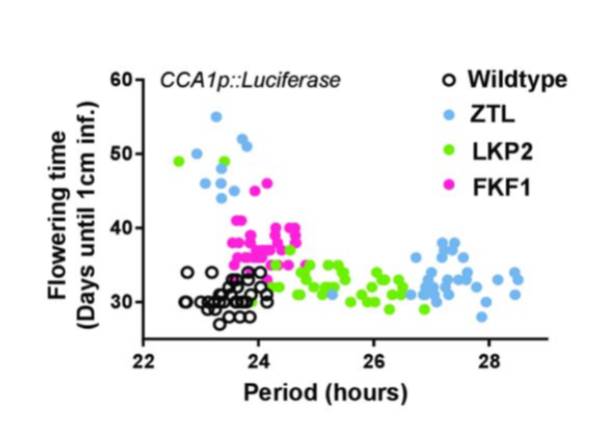
New Insights into the Molecular Biology of Plant Circadian Rhythms
Plant Physiology, Plant Physiology: On The InsideThe circadian clock is an endogenous timekeeper that synchronizes essential biological processes with the outside world. Eukaryotic clocks rely on the ubiquitin proteasome system to target core clock factors for degradation. Altering clock protein degradation can change the period length of the clock.…

Decoys untangle complicated redundancy and reveal targets of circadian clock F-box proteins (Plant Physiol)
Plant Science Research WeeklyThe processing of the circadian clock requires that regulatory proteins are ubiquitinated and degraded, through their interactions with F-box proteins. Lee et al. used a decoy strategy to characterize the targets of three related F-box proteins involved in clock function, ZTL, LKP2 and FKF1, which genetic…
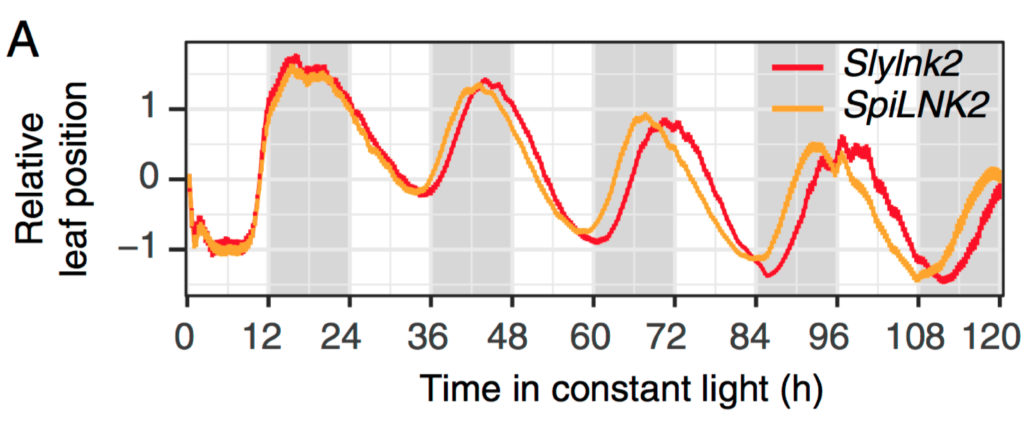
Genes responsible for deceleration of circadian rhythms during tomato domestication (PNAS)
Plant Science Research WeeklyDomestication of crop plants is intimately linked to the modulation of the plants circadian rhythms, allowing adaptation to new agricultural environments. Deceleration of the clock has been instrumental in tomato domestication; however the underlying molecular mechanisms are not fully understood. In…
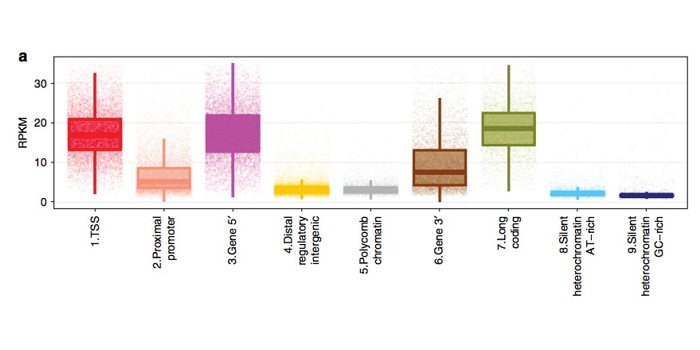
Genome-wide excision repair in Arabidopsis is coupled to transcription and reflects circadian gene expression patterns (Nature Comms)
Plant Science Research WeeklyExposure to ultraviolet radiation and numerous other factors can cause mispairing of the nucleotides in the DNA, compromising genome integrity. Luckily, plants employ excision repair systems to recognize and repair such DNA damage. Oztas et al. examined the dynamics of such a repair system by using excision…
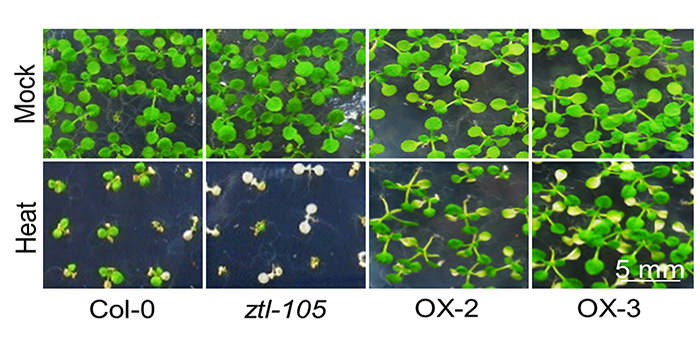
How Plants Clear Toxic Proteins
Research, The Plant Cell, The Plant Cell: In a NutshellGil et al. explore ZTL-mediated protein quality control https://doi.org/10.1105/tpc.17.00612
By Kyung-Eun Gil
Background: As sessile organisms, plants have evolved various mechanisms to adapt to environmental changes. Under stressful conditions such as high temperatures, proteins are misfolded…
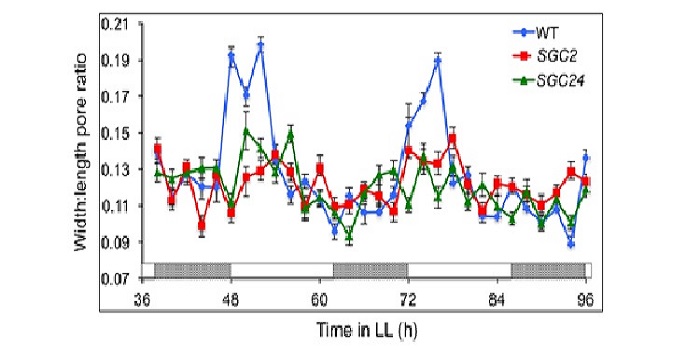
CIRCADIAN CLOCK ASSOICATED 1 (CCA1) and the circadian control of stomatal aperture
Blog, Plant Science Research Weekly, Research, Research BlogHow do plants ‘decide’ how to respond to so many conflicting stimuli? What has the final say in stomatal aperture control? Hassidium et al. investigate the role of the oscillator gene CIRCADIAN CLOCK ASSOICATED 1 (CCA1) during stomatal opening and determined if CCA1 is responsive to other stimuli.…

Stop the Clock: Optimized Carbon Fixation and Circadian Rhythm in a CAM Plant
Blog, Research, Research Blog, The Plant Cell, The Plant Cell: In BriefThe energetically costly tendency of the carbon fixing enzyme RuBisCO to, every now and then, fix oxygen instead of carbon dioxide has led to the evolution of various carbon concentrating mechanisms in plants and algae. One such mechanism, Crassulacean acid metabolism (CAM), involves primary CO2 fixation…

